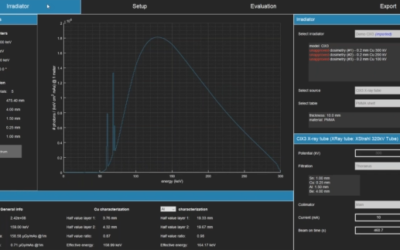The purpose of this work is to determine, using Monte Carlo simulation and a realistic patient model, the characteristics of the resultant absorbed dose distributions when breast tumors are irradiated using small-field stereotactic body radiation therapy (SBRT) with kilovoltage x-ray beams instead of the standard megavoltage energies currently in use. The Rensselaer Polytechnic Institute (RPI) female phantom was used to model a pair of small-field SBRT breast treatments: in one treatment the tumor at depth and another one with the tumor located close to the breast surface. Each treatment consisted of 300 circular beams aimed at the tumor from a plurality of positions. The PENELOPE Monte Carlo code was used to determine the absorbed dose distribution for each beam and subsequently an optimization algorithm determined each beam weight according to a set of prescription goals. Both kilo- and megavoltage beam treatments were modeled, the latter to be used as a reference. Cumulative dose-volume histograms for eleven structures were used to compare the kilovoltage and reference treatments. Integral dose values are also reported. Absorbed dose distributions for the target volumes as well as the organs at risk were within the parameters reported in a clinical trial for both treatments. While for the ipsilateral healthy breast tissue the megavoltage treatment does offer an advantage in terms of less volume irradiated to intermediate doses, for the contralateral structures, breast and lung, the low penetration ability of the kilovoltage treatment results in a lower maximum dose. Skin dose is higher for the kilovoltage treatment but still well within the tolerance limits reported in the clinical trial.
Garnica-Garza HM.







